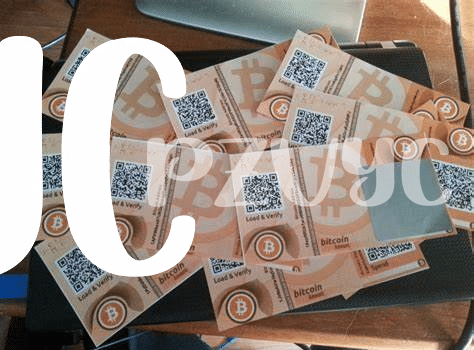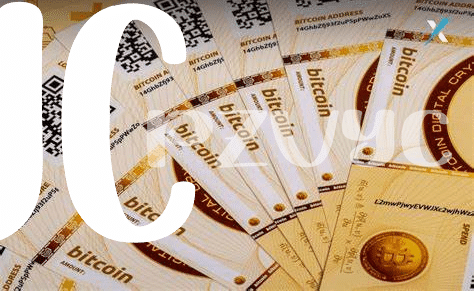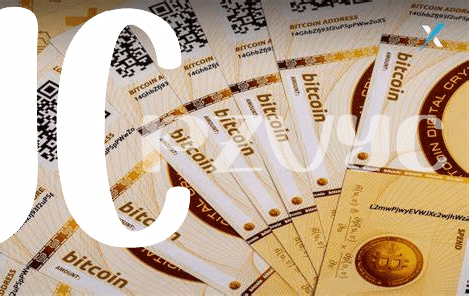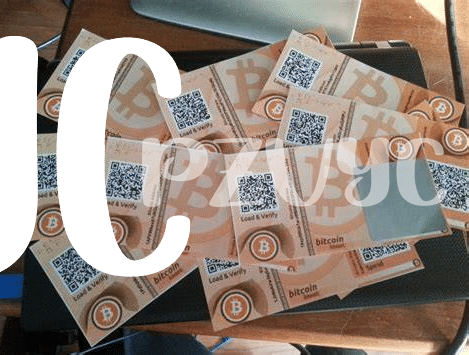What Is a Bitcoin Paper Wallet? 📄

Imagine having a special secret that lets you access a treasure chest – that’s somewhat what a Bitcoin paper wallet is like! It’s a physical copy, just like a piece of paper from your notebook, that holds two very important pieces of information: your public address (kind of like your mailbox number for Bitcoin) and your private key (the secret code to open the mailbox). This means that anyone with this paper can send or receive Bitcoin, making it a super cool but also a super private way to manage your digital gold.
Keeping this piece of paper safe is key (pun intended), as it is your direct access to your Bitcoin. The beauty of it? It’s completely offline, which means hackers can’t get to it through the internet. It’s like having your digital money locked away in a safe that only you know the combination to. Here’s a quick rundown on what and why:
| 🔐 Public Address | Your Bitcoin mailbox number, visible to everyone. |
| 🔑 Private Key | The secret code to access and spend your Bitcoin. |
Whether you’re saving, sending, or receiving Bitcoin, your paper wallet keeps your digital treasure both accessible to you and safe from prying eyes.
Unpacking the Mystery of Private Keys 🔑
Imagine you have a secret key that opens a treasure chest. In the world of Bitcoin, this is not just a fantasy but a reality, and the treasure chest is your digital wallet. Private keys are just like these secret keys, unique to every user, ensuring that only you can access your digital treasures. Think of it as a super-secure password, but one that cannot be reset if lost. It’s a string of numbers and letters, a secret code, that connects you to your Bitcoin. When you hold it, you’re holding the power to unlock and move your digital funds. But with great power comes great responsibility. Keeping this key safe is crucial because if someone else finds it, they could take your Bitcoins. Or, if you lose it, there’s no way to recover your funds. This is the heart of bitcoin security, understanding, and protecting your private key is fundamental. To dive deeper into how this impacts the broader scope of Bitcoin, especially in a corporate context, check out this insightful article: https://wikicrypto.news/rsi-divergence-uncovering-hidden-signals-in-bitcoins-price.
Keeping Your Paper Wallet Safe 🔐

Imagine you found a special key that opens a chest full of treasures but you needed to make sure no one else could get their hands on it. That’s a lot like having a paper wallet for your Bitcoin. Keeping it safe is super important because if someone else finds it, they can access your digital gold. Remember, this little piece of paper holds all the secrets to your treasure! 🗝️🔒
One smart move is to treat it like an important document — think of it like your passport or birth certificate. You might keep it in a secure place, like a safe or a locked drawer. Also, consider making a backup to protect against accidental loss. Think about it as making a photocopy of a super important letter, just in case. And most importantly, just like a secret, the less you talk about it, the safer it is! 🤫🛡️
How to Create Your Own Paper Wallet 🛠️

Making your own paper wallet is like crafting a treasure map to your digital gold. Imagine folding a piece of paper into a secret, secure hideout for your Bitcoin. It starts with generating a unique private key—think of it as the secret password to your treasure chest. This vital step can be done using online tools that mix up letters and numbers in a special recipe, creating a key just for you. Once you have your private key, it gets printed on a piece of paper along with a QR code, a square barcode, making transactions a breeze. But this isn’t just any piece of paper. It’s your ticket to holding your Bitcoin offline, away from the prying eyes of hackers. As the world leans more into the digital, understanding the nuts and bolts of Bitcoin becomes crucial. For insights into bitcoin and corporate adoption suggestions, diving deeper into how industries are integrating this digital gold enriches your knowledge bank, preparing you for the future of finance. Remember, the secret to a robust paper wallet lies in its creation and safekeeping, ensuring your digital treasure is secure from storms and pirates alike. 🛠️🔐🌐
When to Use a Paper Wallet Vs. Digital 💻🆚📄
Choosing between a paper wallet and a digital one can feel like deciding between a safe and a bank. If you cherish old-school security, like a treasure map in a bottle, a paper wallet 📄 might just be your thing. Imagine your Bitcoin keys printed out, resting safely in a drawer, away from the prying eyes of online hackers. On the flip side, for those who live life in the fast lane, a digital wallet 💻 keeps your coins just a click away, perfect for quick transactions or trading. It’s all about your lifestyle and security preferences. Here’s a simple breakdown:
| Feature | Paper Wallet | Digital Wallet |
|---|---|---|
| Security Level | 🔐 High (offline) | Medium (online risks) |
| Convenience | Low (manual recovery needed) | High (quick transactions) |
| Suitability | Long-term storage | Everyday use |
Whether you opt for the tangible reassurance of paper or the swift accessibility of a digital wallet can depend on how often you plan to access your Bitcoin. Long-term holders might lean towards the unmatched security of paper, while active traders could find digital wallets more in tune with their needs.
Recovering Your Funds: a Step-by-step Guide 🔄

Imagine you’ve carefully stored your bitcoin in a paper wallet for extra security, but now you need to move it back online or to a different storage solution. What do you do? First, you’ll need to find a trusted bitcoin wallet application or platform. Here’s where things get a bit technical, but don’t worry, it’s like following a recipe 🍰. Open the app and look for an option to ‘import’ or ‘sweep’ a paper wallet. You’ll be prompted to enter your paper wallet’s private key—think of this as the secret code 🗝️ that unlocks your funds. It’s crucial to do this step in a secure environment to prevent any sneaky eyes from catching your code. Once your private key is inputted, your funds will start moving into your chosen digital wallet. This process can take a little time, so don’t worry if your funds don’t show up instantly. It’s like sending a letter; you know it will get there, it just takes a bit of time 🕰️. Remember, if you ever feel stuck or unsure, plenty of resources are available to help guide you. For in-depth tips and strategies on managing your digital currency, especially considering bitcoin and the dark web suggestions, a great resource is here. Stay patient and follow the steps, and you’ll see your funds safe in their new home before you know it.
